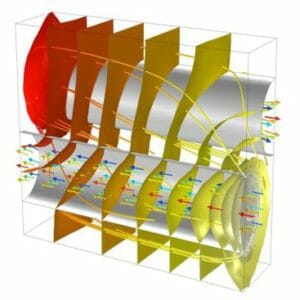E – 1534 Basics of Passive Solar Heating
$100.00
Courses Included
The principles of passive solar heating, such as basic types of systems, their description, and the components making up any passive system are presented in this course. Sources of data for heating requirements and available solar radiation throughout the U.S are identified and discussed along with a method for estimating the rate of heat loss from a home. The use of these three inputs in a method for estimating performance of a passive heating system of specified size at a specified location is presented. The data retrieval and calculations are illustrated with numerous examples.
Description
The principles of passive solar heating, such as basic types of systems, their description, and the components making up any passive system are presented in this course. Sources of data for heating requirements and available solar radiation throughout the U.S are identified and discussed along with a method for estimating the rate of heat loss from a home. The use of these three inputs in a method for estimating performance of a passive heating system of specified size at a specified location is presented. The data retrieval and calculations are illustrated with numerous examples.
- Be able to name the six components which typically make up a passive solar heating system
- Be able to name five basic types of passive solar heating systems
- Be able to describe the differences between daytime and nighttime operation of direct gain passive solar heating systems.
- Be able to describe the differences between daytime and nighttime operation of indirect gain passive solar heating systems.
- Be able to obtain and interpret data for solar radiation rate on vertical and horizontal surfaces of buildings at any of the 239 locations in the NREL database.
- Be able to obtain and interpret data for heating degree days at any of the 239 locations in the NREL database.
- Be able to estimate the rate of heat loss (Btu/oF-day/ft2) from a building if one year’s monthly power bills for the building are available.
- Be able to estimate the monthly percentage of a buildings heating requirement provided by a given size passive solar heating system at a given location in the U.S., with specified rate of heat loss from the building (Btu/oF-day/ft2).
- Be able to estimate the quantity of thermal storage needed for a passive solar heating system with specified area of glazing
- Be able to obtain solar radiation data from the NASA/Langley website that was described and discussed in the course.






